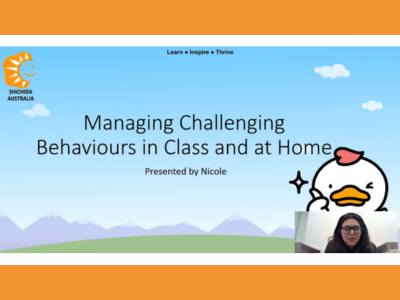Managing Challenging Behaviour: Tips for Parents and Teachers
We share some tips on managing challenging behaviour throughout various age ranges and stages of development.
Teacher Nicole talks us through this important topic and will look at the following:
- What is behaviour?
- Different approaches to behaviour
- How do I collaborate with my child?
- Types of challenging behaviour
- Age groups and behaviour
- How to manage challenging behaviour
Managing Challenging Behaviour in Class and at Home
As a parent or teacher, it’s important to know how to manage challenging behaviour in your child or student. Behaviour is a complex concept that includes emotions, actions, and reactions to different situations. Some children may struggle to manage their behaviour due to developmental issues, stress, anxiety, or other factors. The first step in managing challenging behaviour is to understand what it is and what causes it.
Different approaches to managing behaviour include positive reinforcement, consequences, and redirection. Positive reinforcement involves rewarding good behaviour to encourage it to continue. Consequences, on the other hand, involve giving a negative consequence for undesirable behaviour. Redirection involves guiding a child towards a more appropriate behaviour.
It’s also important to collaborate with your child or student to find solutions. This can involve setting clear expectations and boundaries, developing a behaviour plan, and creating a reward system for positive behaviour.
There are several types of challenging behaviour that you may encounter. These can include physical aggression, verbal aggression, non-compliance, and attention-seeking behaviour. It’s important to recognize the type of behaviour you’re dealing with in order to choose the most effective strategy for managing it.
Age-specific strategies can also be helpful in managing challenging behaviour. For young children, using positive reinforcement and redirection can be effective. For older children and teenagers, setting clear expectations and boundaries, developing a behaviour plan, and involving them in the decision-making process can be helpful.
In conclusion, managing challenging behaviour requires patience, understanding, and effective communication. By understanding what behaviour is, different approaches to managing it, and collaborating with your child or student to find solutions, you can help them develop positive behaviour patterns and reach their full potential. Remember to always seek support from other parents, teachers, or professionals if needed, and to approach challenging behaviour with a positive and proactive mindset.
For further reading we recommend our blog article on Building Focus In Your Distracted Child.
